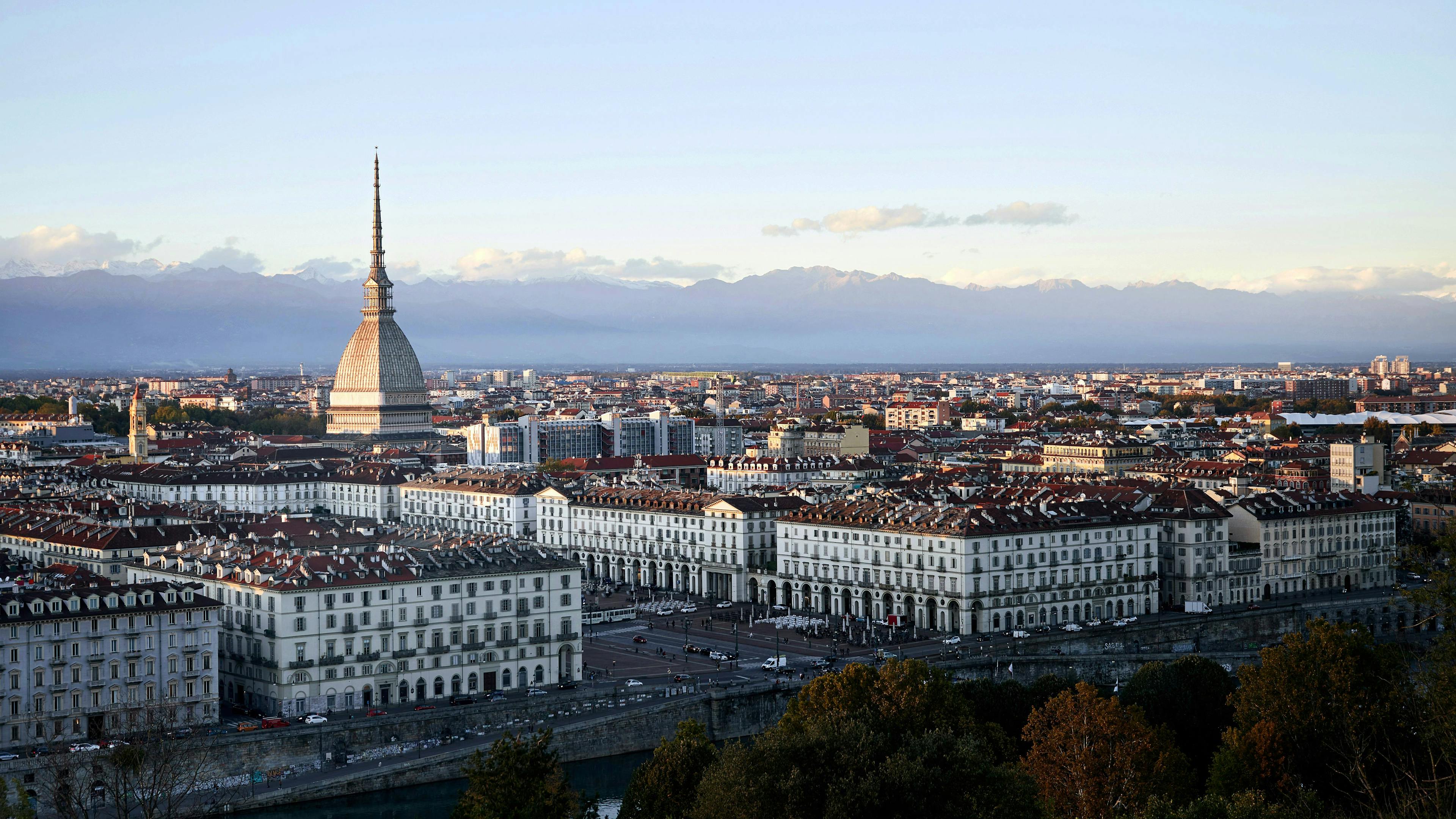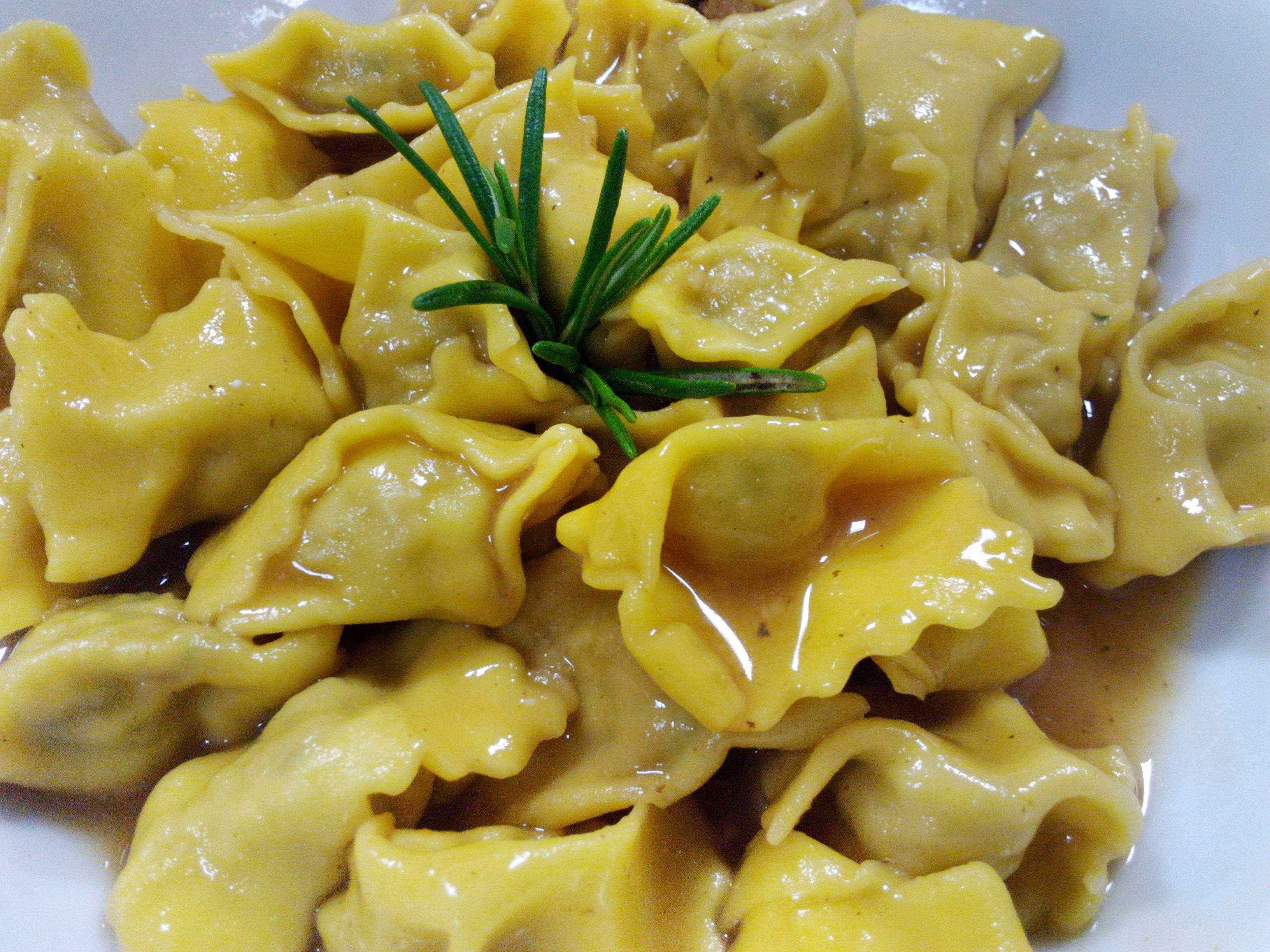

In the global culinary landscape, Italian cuisine has always stood out for its variety of flavors, ingredients, aromas, and traditions, with recipes passed down through generations deeply rooted in the history of the Bel Paese. Each region has its typical recipes that make Italy a kaleidoscope of specialties, often famous beyond national borders. Today, let's discover the Piedmontese culinary tradition, characterized by the fusion of three different cuisines: the popular, the bourgeois, and the noble.

But before starting this journey, we immediately present the recipe of our Cesarina Benedetta from Turin so you can bring a piece of Piedmont to your tables: Agnolotti del Plin.

Agnolotti del Plin
Traditional filled pasta from Piedmont
Ingredients
- For the dough:
- 200 g 00 flour
- 1 medium egg + 3 yolks
For the filling:- 200 g pork loin
- 200 g veal pulp
- 200 g spinach (or escarole)
- 80 g onion
- 1 clove of garlic
- 80 g celery
- 100 g carrots
- 1 l meat broth
- 50 g grated cheese
- 1 medium egg
- Nutmeg, to taste
- Salt, to taste
- Pepper, to taste
Method
Filling preparation:
- Cut the meats into pieces and brown them in a saucepan with some oil. Add the chopped onion, celery, carrots, and crushed garlic. Sauté the ingredients for a few minutes and add salt and pepper to taste.
- Cook for 2 hours over low heat, covering with a lid and adding hot broth as needed.
- Once cooked, let the meat cool. Then, blend it in a food processor with all the cooking ingredients and the boiled and squeezed spinach. Add the cheese, egg, and nutmeg: the mixture should be soft but rather dry. (When there were no food processors, everything was finely chopped by hand, for an even more rustic result. If you have time, try it: the difference is noticeable!)
Dough preparation:
- Place the flour, whole egg, and yolks in a bowl. Mix the ingredients until you get a smooth and homogeneous dough.
- Transfer the dough to the work surface, form a ball, and wrap it in plastic wrap.
- Let it rest for half an hour in a cool place.
- After the resting time, take a piece of dough (about 100 gr) and slightly flatten it with your hands, using a little flour.
- Pass the piece of dough through a pasta machine set to the widest thickness. Then, pass the sheet through the machine several times, reducing the thickness each time and flouring the sheet until you reach the thinnest thickness.
Agnolotti preparation:
- Using a piping bag (or a teaspoon), place the filling on the dough sheet, creating small heaps the size of hazelnuts, spaced about 2 cm apart. You should keep a distance from the edge of the sheet so that, by folding the empty part of the sheet, you can completely cover the filling heaps.
- Press the sheet between the heaps and at the top to eliminate air and seal well.
- With a fluted pastry wheel, remove the excess dough along the entire length and finally pinch the sheet between the fillings with your fingers to form the agnolotti. Continue until finished.
Cooking:
- Cook the agnolotti in a good meat broth or salted water until they float to the surface (about 3/4 minutes).
Cuisine: a weave of stories and cultures
Piedmontese gastronomic tradition has its origins in the rediscovery of popular ingredients and was formed thanks to the meeting of three culinary arts: the peasant one, where few ingredients were used and recipes were orally transmitted; the bourgeois one of bankers, merchants, and small landowners, where recipes were written down and larger quantities of more or less refined ingredients like game, poultry, and veal were used; and finally, the noble one, which adorned the tables of the Savoy court, consisting of more elaborate preparations using more sought-after ingredients, even from abroad, like France. It is from the fusion of these diverse worlds that Piedmontese gastronomic tradition has emerged over the centuries.
What is Piedmontese cuisine like?
Piedmont, a vast and varied territory extending from the plains to the alpine peaks. This geographic differentiation is also reflected in the gastronomic offerings with a wide range of foods that have given rise to a tasty and varied cuisine ranging from meats (also consumed raw), lake fish, handmade pasta, cheeses, slow-cooked braises, to desserts and renowned wines. Piedmontese cuisine is highly appreciated in the fall when the land offers some of its most sought-after fruits like mushrooms and truffles.

What are some typical Piedmontese dishes?
Summarizing Piedmontese cuisine in a limited list of typical recipes is practically impossible, given the many specialties this region offers. Here, we mention the most well-known dishes, the ABC - so to speak: those dishes that everyone should try at least once in their life. The queen (and perhaps most well-known) recipe of the Piedmontese tradition is Bagna Cauda: typical of the winter period, it is a kind of dip made from garlic, anchovies, olive oil, and melted butter. It is served in terracotta containers called “fojòt”, kept warm constantly. However, a typical Piedmontese lunch cannot start without a classic appetizer, such as Vitello Tonnato, Fassona beef tartare chopped with a knife, or a platter of local cold cuts accompanied by a polenta tart.

Notable first courses include Piedmontese Agnolotti, traditional in popular tradition where leftover roast meat was used for the filling; Tajarin, thin hand-cut egg noodles served with a generous grating of white truffle; and finally, Risotto al Barolo, cooked in a meat broth and Barolo wine, giving it an intense and rich flavor. The most appreciated meat main courses are the classic Bollito Misto (it seems this meat triumph was among King Vittorio Emanuele II's favorite dishes), Piedmontese mixed fry, where less noble parts like veal offal or chicken giblets are used to create a delicious recipe, and finally, Brasato al Barolo, a tender and juicy meat second course that cuts like butter.

Sweets, cakes, and creams also play an important role in the traditional Piedmontese menu. Here we remember Bonet, a steamed pudding made from amaretti and cocoa served warm or cold, Barolo cherries, hazelnut cake, zabaglione, and gianduia cream. In short, Piedmont is a true paradise for sweet lovers!

Lesser-known Piedmontese traditional dishes
Alongside the classic dishes just seen, there are other preparations, perhaps less known, but still part of the Piedmontese gastronomic tradition.
Fugassa d’la Befana: a typical Cuneo sweet prepared for Epiphany. A sweet brioche focaccia enriched with candied fruit that hides a surprise inside: a white bean or a black bean. According to tradition, the one who finds the white bean must bear the cost of the focaccia, while the one who finds the black bean must offer drinks to everyone.
Cagliette: a typical dish of the alpine tradition, these are elongated bread dumplings seasoned with butter and sage. However, they can also be prepared using grated raw potatoes, assembled with the other ingredients, and then boiled in water.
Torta 900: a cake made of a chocolate sponge base and a filling of chocolate custard. The invention is credited to the creative flair of pastry chef Ottavio Bertinotti from Ivrea, who dedicated the cake to the new century. In 1970, Bertinotti’s pastry shop was taken over by Umberto Balla, and since then, Pasticceria Balla has been the custodian of the original recipe, which has been a registered trademark since 1964.
